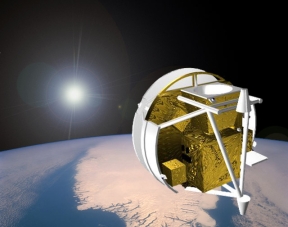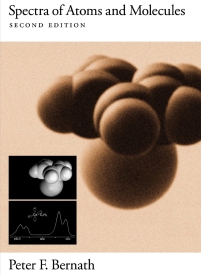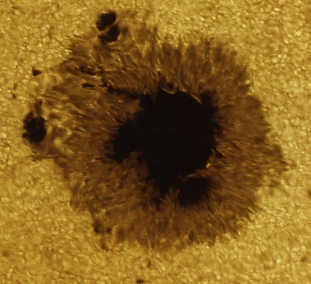 |
 |
 |

Dept. of Chemistry & Biochemistry
Old Dominion University
Norfolk, VA 23529-0126

RESEARCH
Satellite Remote Sensing of Pollution
We detect organic molecules in the upper troposphere using a high resolution Fourier transform infrared spectrometer on the Atmospheric Chemistry Experiment (ACE) satellite in low earth orbit. The ACE spectrometer measures the absorption and scattering of sunlight by the atmosphere during sunrise and sunset. Molecules of interest include small non-methane hydrocarbons such as ethane and ethene as well as oxygenated species such as acetone, methanol and acetaldehyde. The goals of the project include the preparation of the first global atmospheric distributions, and the study of pollutant gas plumes caused by biomass burning and industrial activity. We carry out laboratory measurements of infrared absorption cross sections, development of the retrievals, and validation of the retrievals by comparison with ground-based and airborne measurements. Our results are compared with the predictions of global chemical transport models. (See: http://www.ace.uwaterloo.ca/; Geophys. Res. Lett. 32, L15S01 (2005); Science 2010, 328, 611).
Gas Phase Inorganic ChemistryWe are interested in the study of small metal-containing molecules by high resolution laser and Fourier transform spectroscopy. A wide variety of unusual species such as free radicals, ions and high temperature molecules are made in sources that use laser ablation, electrical discharges or furnaces. Although these transient molecules occur in low concentrations, they are the agents of chemical change and can be found in energetic environments such as stellar and planetary atmospheres, explosions and industrial plasmas. For example, the spectra of simple molecular fragments such as MCH3 and MBH4 (M= Ca, Sr) are recorded by laser excitation spectroscopy. Spectra are also recorded by infrared emission spectroscopy with a Fourier transform spectrometer. (See: Science, 1991, 254, 665 and 2002, 297, 1323; J. Phys. Chem. A, 2005, 109, 10547).

Molecular AstronomyIn recent years the study of cool stellar and sub-stellar objects such as brown dwarfs and extrasolar planets has become an important area of research. In contrast to typical stars like our Sun (which show mainly atomic absorption lines), the spectra of these cool objects are dominated by molecular absorption. Various molecules including CN, VO, CaH, CrH and H2O, CH4 and NH3 are found in these objects and need to be included in models that simulate the observed spectral energy distributions. New laboratory spectra of astrophysically important molecules are recorded and combined in an optimal way with theoretical predictions to produce the molecular opacities needed for stellar models. Our work, for example, led to the observation of “Water on the Sun.” In addition, new astronomical observations of the spectra of cool objects such as brown dwarfs are carried out at observatories in Chile, Hawaii and Arizona. (See: Science 1995, 268, 1155; ApJ 2003, 594, 651; ApJ 2011, 735, 111).


|
 |
|
 |
 |
|
 |
 |
|
|